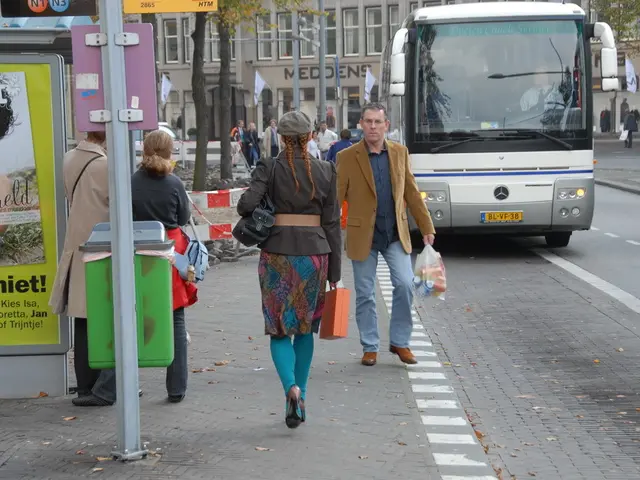Stepping Into the Darkness: Child Sexual Abuse Revelations in Germany
Analysis: Child Sexual Abuse Victims in Millions, Study Reveals
In a chilling disclosure, a new study reveals that 1 in 5 women in Germany has endured sexual violence as a child or adolescent. The research, primarily conducted by the Central Institute of Mental Health (CIMH) in Mannheim, reveals the shockingly high 12.7% prevalence of such acts amongst the 18 to 59-year-old population, equating to over 5.7 million individuals[1].
Mannheim psychiatrist, Harald Dressing, the study’s coordinator, acknowledges the staggering extent of these abhorrent acts, categorizing it as a "significant dark figure" in German society[2]. Interestingly, this study does not merely focus on the Catholic and Protestant churches, where instances of abuse have been more prevalent in recent years. Instead, it sheds light on the various facets of German society where these tragedies transpire[2].
The Lingering Damage
The research detected that the average age for the victims at first occurrence was 11.2 years old. What's more alarming is that half of the victims experienced sexual violence not just once but repeatedly, with multiple occurrences being particularly prevalent in victims who were violated at a tender age[2]. Over a period of 3.4 years on average, the abuse continued for those exposed to multiple incidents.
In his extensive research into widespread sexual abuse within the Catholic and Protestant churches, Dressing reveals the diverse arenas where such actuations occur[2]. Unsurprisingly, young women aged between 18 and 29 are most susceptible to sexual assault at 27.4%[2]. Notably, girls are often abused within their family and social circle, which emerges as the most common context at approximately one-third overall[2].
The Internet Age: A New Playground
The research highlights that about 32% of respondents experienced sexualized violence via the internet[2]. The study pinpoints three common occurrences; unwanted contact with pornographic material (18%) and unwanted information and sexual conversations of roughly 10% each[2].
The True Nature of the Beast
The survey data underscores the gravity of these atrocities. Tactile assaults were present in more than 95% of the cases[2], with a penetrative act occurring in a shocking 23.7%[2]. Moreover, the study indicates that a whopping 95% of perpetrators were male[2].
Furthermore, the researchers probe child sexual abuse incidences up to the age of 14 and those forced upon those under the age of 18 without consent. They also investigate forms of sexual harassment and coercion, along with internet-based predatory activities[2].
The Heartbreaking Silence
Dressing poignantly remarks, “When a child becomes a victim of sexualized violence, it's a severe trauma that can destroy a life."[2] He adds that feelings of shame and guilt, coupled with a fear of being disbelieved perpetuate a lot of silence[2]. Roughly 37% of victims narrative their suffering to the Mannheim researchers for the first time[2]. Even more promising, 56% have already told someone about their experience[2]. However, only 7% have reported the incident to the police[2], while 14% have sought psychological treatment due to the events[2].
Charting a Path Forward
To decrease these bleak statistics, Dr. Dressing calls for ongoing research, enabling the development of tailored protection plans in institutions and homes[2]. Given the high prevalence of family abuses, Dressing emphasizes the need for enhanced awareness and education, underlining the importance of disseminating information about support resources to a broader audience.
- The study conducted by the Central Institute of Mental Health (CIMH) in Mannheim, which revealed a shockingly high prevalence of child sexual violence in Germany, also shed light on the various facets of society where these tragedies transpire, including within the family and social circle.
- In his research into widespread sexual abuse, Mannheim psychiatrist Harald Dressing found that around 32% of respondents experienced sexualized violence via the internet, with unwanted contact with pornographic material being the most common occurrence.
- Addressing the issue of child sexual abuse, Dr. Dressing emphasized the need for enhanced awareness and education, particularly in families, and stressed the importance of disseminating information about support resources to a broader audience as a means to decrease the prevalence of this devastating issue.








